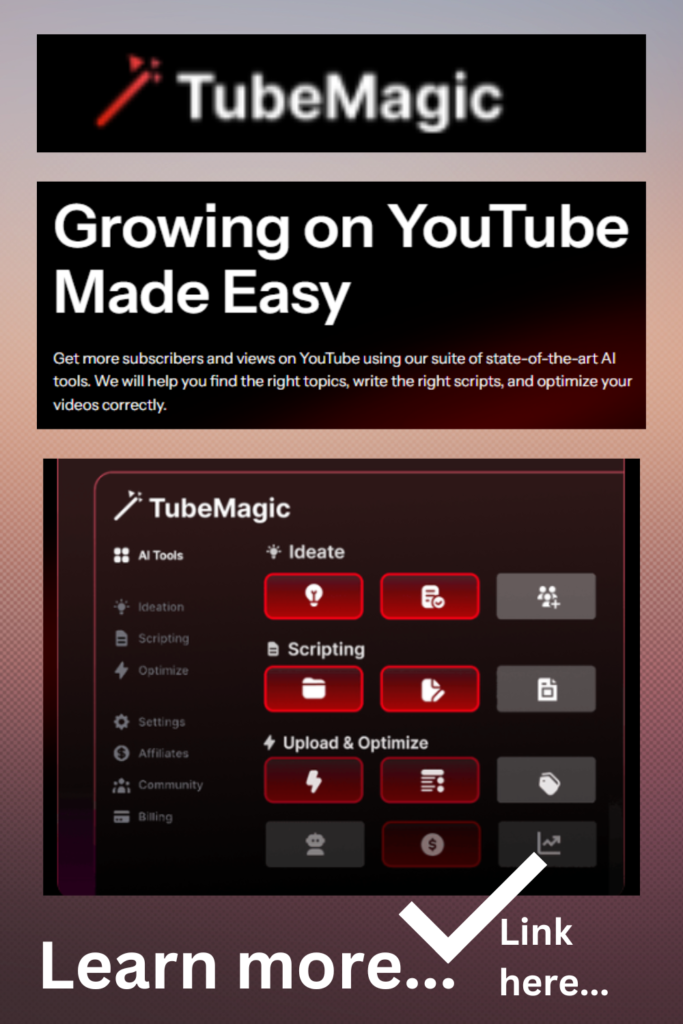
TCAMRC Newsletter Vol.1.2
Publication Date: September 2024

Our SB360 online magazine publication is now in newsletter format. We continue our objective of providing information, articles and personal stories for and about sole proprietors and online entrepreneurs.
How to Identify and Avoid Online Scams and Spammers
BH Thompson, IT Contributor
In the digital age, online scams and spammers are increasingly sophisticated, making it crucial for online entrepreneurs to stay vigilant. Here are some practical tips to help you recognize and avoid common online scams:

- Verify Email Senders: Always check the sender’s email address. Scammers often use addresses that look similar to legitimate ones but may have slight variations. Look for inconsistencies or unusual domains.
- Be Wary of Unsolicited Offers: If an offer seems too good to be true, it probably is. Be cautious of unsolicited emails or messages promising large sums of money, free products, or exclusive deals.
- Check for Secure Websites: Before entering any personal or financial information, ensure the website is secure. Look for “https://” in the URL and a padlock icon in the address bar.
- Avoid Clicking on Suspicious Links: Hover over links to see the actual URL before clicking. Scammers often disguise malicious links to look like legitimate ones. If in doubt, don’t click.
- Use Strong, Unique Passwords: Protect your accounts with strong, unique passwords. Avoid using easily guessable information like birthdays or common words. Consider using a password manager to keep track of your passwords.
- Enable Two-Factor Authentication (2FA): Adding an extra layer of security with 2FA can help protect your accounts even if your password is compromised. This typically involves receiving a code on your phone or email that you must enter in addition to your password.
- Educate Yourself and Your Team: Regularly update yourself and your team on the latest scams and phishing techniques. Awareness is key to prevention.
By staying informed and cautious, you can protect yourself and your business from online scams and spammers. Remember, when in doubt, it’s always better to err on the side of caution.

A Beginner’s Guide
Liz Zimmerman, TCAMRC staff writer
Building a Strong Online Presence
Having a strong online presence is essential for any business. Whether you’re just starting out or looking to enhance your existing presence, this guide will help you create and maintain a professional website and social media profiles.
Step 1: Define Your Brand
Before you start building your online presence, it’s crucial to define your brand. Consider the following:
- Brand Identity: What are your business’s core values, mission, and vision?
- Target Audience: Who are your ideal customers? What are their needs and preferences?
- Unique Selling Proposition (USP): What sets your business apart from competitors?
Step 2: Create a Professional Website
Your website is often the first point of contact for potential customers. Here’s how to make it stand out:
- Choose a Domain Name: Select a domain name that reflects your brand and is easy to remember. Avoid using numbers or hyphens.
- Select a Website Builder or CMS: Platforms like WordPress, Wix, or Squarespace offer user-friendly tools to create a professional website without needing extensive coding knowledge.
- Design a User-Friendly Layout: Ensure your website is easy to navigate. Use a clean, responsive design that works well on both desktop and mobile devices.
- Create Quality Content: Populate your website with high-quality content that provides value to your visitors. This includes:
- Homepage: A clear and concise introduction to your business.
- About Page: Information about your business’s history, mission, and team.
- Products/Services: Detailed descriptions of what you offer.
- Blog: Regularly updated articles that address your audience’s interests and pain points.
- Contact Information: Make it easy for visitors to get in touch with you.
- Optimize for SEO: Use search engine optimization (SEO) techniques to improve your website’s visibility on search engines. This includes using relevant keywords, optimizing meta tags, and ensuring fast.
Step 3: Establish Social Media Profiles
Social media is a powerful tool for connecting with your audience and promoting your brand. Follow these steps to create effective social media profiles:
- Choose the Right Platforms: Identify which social media platforms your target audience uses most. Common platforms include Facebook, Instagram, Twitter, LinkedIn, and Pinterest.
- Create Consistent Profiles: Ensure your brand’s name, logo, and bio are consistent across all platforms. Use high-quality images and a professional tone.
- Develop a Content Strategy: Plan your content in advance. Mix promotional posts with engaging content that provides value to your audience. This can include:
- Educational Posts: Share tips, tutorials, and industry news.
- Interactive Content: Use polls, quizzes, and Q&A sessions to engage your audience.
- Visual Content: Post high-quality images, infographics, and videos.
- Engage with Your Audience: Respond to comments and messages promptly. Show appreciation for your followers and encourage interaction.
- Analyze and Adjust: Use analytics tools to track your performance. Monitor metrics like engagement, reach, and conversions to understand what works and what doesn’t. Adjust your strategy accordingly.
Step 4: Maintain and Update Regularly
Building a strong online presence is an ongoing process. Regularly update your website and social media profiles with fresh content. Stay informed about the latest trends and best practices to keep your online presence relevant and effective.
If you put a plan in motion and use these steps as a guide, you would be on your way to creating and maintaining a professional online presence that attracts and retains customers. Good luck!
A/B
Testing
Understanding A/B Testing in Email Marketing
Johnathan Turner
A/B testing, also known as split testing, is a method used to compare two versions of an email to determine which one performs better. This technique helps you make data-driven decisions to optimize your email marketing campaigns. Here’s a detailed look at how A/B testing works and how you can implement it effectively:
What is A/B Testing?
A/B testing involves creating two variations of an email (Version A and Version B) and sending them to different subsets of your email list. By analyzing the performance of each version, you can identify which elements resonate best with your audience. Common elements to test include:
- Subject Lines: Test different subject lines to see which one has a higher open rate.
- Email Content: Compare different email body content, such as text, images, and layout.
- Call to Action (CTA): Experiment with different CTAs to see which one drives more clicks.
- Send Times: Test different times of day or days of the week to find the optimal send time.
Benefits of A/B Testing
- Improved Engagement: By identifying what works best, you can increase open rates, click-through rates, and overall engagement.
- Data-Driven Decisions: A/B testing removes guesswork, allowing you to make informed decisions based on actual data.
- Continuous Improvement: Regular testing helps you continually refine and improve your email marketing strategy.
How to Conduct A/B Testing
- Define Your Goal
- Determine what you want to achieve with your test. Are you looking to increase open rates, click-through rates, or conversions?
- Choose a Variable to Test
- Select one element to test at a time. This could be the subject line, email content, CTA, or send time.
- Create Variations
- Develop two versions of your email, changing only the variable you want to test. For example, if you’re testing subject lines, keep the email content the same for both versions.
- Segment Your Audience
- Divide your email list into two random and equal segments. Ensure that each segment is representative of your overall audience.
- Send the Emails
- Send Version A to one segment and Version B to the other. Make sure to send them at the same time to avoid any timing biases.
- Analyze the Results
- After a sufficient period, analyze the performance of each version. Look at key metrics such as open rates, click-through rates, and conversions.
- Implement the Winning Version
- Once you’ve identified the better-performing version, use it for your broader email campaign.
Tips for Effective A/B Testing
- Test One Variable at a Time
- To accurately determine what caused the difference in performance, test only one variable at a time.
- Use a Large Enough Sample Size
- Ensure your sample size is large enough to provide statistically significant results. Small sample sizes can lead to inaccurate conclusions.
- Run Tests Simultaneously
- Send both versions at the same time to avoid external factors influencing the results.
- Monitor and Iterate
- Continuously monitor your results and iterate on your findings. A/B testing is an ongoing process that helps you refine your strategy over time.
By incorporating A/B testing into your email marketing strategy, you can make data-driven decisions that enhance your campaigns’ effectiveness and drive better results. Happy testing!
Share Your Story
We really do want to hear from you. Let’s share your story across the globe. TCAMRC is all about getting the news out and sharing true stories around the world!
What is Encryption?
Encryption is the process of converting plaintext (readable data) into ciphertext (unreadable data) using an algorithm and a key. This ensures that only authorized parties with the correct decryption key can access the original information. Encryption is widely used to protect data in transit (e.g., emails, online transactions) and data at rest (e.g., stored files, databases).

Learn more about how to use encryption and its importance for the security of your online business. (Free)

The Dawn of a New Era: Peering into the AI Crystal Ball
Carey Summers, TCAMRC editorial staff
In the heart of Silicon Valley, amidst a labyrinth of humming servers and glowing screens, a revolution is brewing
Artificial Intelligence, once a figment of science fiction, is rapidly weaving itself into the fabric of our reality. But where is this technological juggernaut headed in the next five years? Let’s embark on a speculative journey, peering into the AI crystal ball, exploring the possibilities and pondering the implications.
The Rise of Conversational AI:
Picture this: you wake up to a gentle voice, not from an alarm clock, but from your AI assistant, seamlessly integrated into your smart home. It briefs you on the weather, your schedule, and even suggests a healthy breakfast based on your dietary needs. Throughout the day, this conversational AI companion aids you in tasks big and small, from managing your calendar to composing emails, all while adapting to your unique communication style. This is not a distant dream; it’s a near-future reality. With advancements in natural language processing and machine learning, AI will become increasingly adept at understanding and generating human-like language. We’ll witness the rise of sophisticated chatbots and virtual assistants capable of engaging in meaningful conversations, providing personalized recommendations, and even offering emotional support.
AI-Powered Healthcare:
In the realm of healthcare, AI is poised to revolutionize diagnosis, treatment, and patient care. Imagine a world where AI algorithms analyze medical images with superhuman accuracy, detecting early signs of diseases that might elude even the most experienced physicians. Imagine AI-powered robots assisting in surgeries, performing delicate procedures with precision and minimizing the risk of human error. Imagine virtual health assistants providing round-the-clock support, answering questions, monitoring vital signs, and offering personalized health advice. These are not mere fantasies; they are the seeds of a future where AI and healthcare intertwine to create a more efficient, accessible, and effective system.
The Autonomous Revolution:
From self-driving cars to delivery drones, the autonomous revolution is gaining momentum. In the next five years, we can expect to witness significant advancements in autonomous vehicles, making our roads safer and our commutes more efficient. AI algorithms will navigate complex traffic scenarios, anticipate pedestrian behavior, and make split-second decisions to avoid accidents. Delivery drones will zip through the skies, dropping off packages at our doorsteps with unparalleled speed and convenience. While the full realization of autonomous transportation may still be a few years away, the next five years will undoubtedly see remarkable progress, paving the way for a future where machines take the wheel.
AI in the Workplace:
The workplace is also undergoing a transformation fueled by AI. Routine and repetitive tasks are being automated, freeing up human workers to focus on more creative and strategic endeavors. AI-powered tools are streamlining workflows, enhancing productivity, and enabling data-driven decision-making. However, this transformation also raises concerns about job displacement and the need for upskilling. As AI continues to evolve, it will be crucial to ensure that the workforce is equipped with the skills needed to thrive in an AI-powered economy.
The Ethical Considerations:
As AI becomes increasingly integrated into our lives, it is essential to address the ethical considerations that arise. Issues of bias, transparency, and accountability must be carefully navigated to ensure that AI systems are fair, just, and aligned with human values. We must also be mindful of the potential impact of AI on privacy and security, and take steps to safeguard sensitive information.
The Road Ahead:
The next five years promise to be an exciting and transformative period in the evolution of AI. We stand on the cusp of a new era, where intelligent machines will play an increasingly prominent role in our lives. While the future is uncertain, one thing is clear: AI has the potential to reshape our world in profound ways. As we embrace this technological revolution, it is imperative that we do so responsibly, with a focus on harnessing AI’s power for the betterment of humanity.
Let us embark on this journey together, with a sense of wonder and a commitment to shaping a future where AI serves as a force for good, empowering us to achieve new heights of innovation, creativity, and progress. The dawn of a new era is upon us; let us welcome it with open arms and open minds.

Effective Email Marketing Strategies for Small Businesses
Johnathan Turner, TCAMRC Editorial Staff
Email marketing remains one of the most effective ways for small businesses to reach and engage their audience. With the right strategies, you can build a robust email list and keep your subscribers engaged. Here are some techniques to help you get started:
Building Your Email List
- Create Compelling Lead Magnets
- Offer Value: Provide something valuable in exchange for email addresses. This could be an eBook, a discount code, a free trial, or exclusive content.
- Targeted Content: Ensure your lead magnet is relevant to your target audience. For example, if you run a fitness blog, a free workout plan would be a great lead magnet.
- Optimize Your Signup Forms
- Placement: Place signup forms in strategic locations on your website, such as the homepage, blog posts, and landing pages.
- Simplicity: Keep your forms simple. Ask for only essential information, like name and email address, to reduce friction.
- Call to Action (CTA): Use clear and compelling CTAs. Instead of “Subscribe,” try “Get Your Free Guide.”
- Leverage Social Media
- Promote Your Lead Magnets: Share your lead magnets on social media platforms to attract followers to your email list.
- Use Social Media Ads: Run targeted ads to drive traffic to your signup forms or landing pages.
- Host Webinars and Events
- Registration: Require email registration for webinars, workshops, or live events. This not only builds your list but also engages your audience with valuable content.
Engaging Your Email List
- Segment Your Audience
- Personalization: Segment your email list based on demographics, behavior, or interests. This allows you to send more personalized and relevant content.
- Targeted Campaigns: Create targeted email campaigns for different segments. For example, send product recommendations based on past purchases.
- Craft Compelling Content
- Value-Driven Emails: Ensure every email provides value to your subscribers. This could be educational content, exclusive offers, or industry news.
- Engaging Subject Lines: Write attention-grabbing subject lines to increase open rates. Use personalization and curiosity to entice readers.
- Maintain Consistency
- Regular Schedule: Send emails on a regular schedule, whether it’s weekly, bi-weekly, or monthly. Consistency helps build trust and keeps your audience engaged.
- Content Calendar: Plan your email content in advance with a content calendar. This ensures a steady flow of relevant and timely emails.
- Encourage Interaction
- Call to Action: Include clear CTAs in your emails, encouraging subscribers to take action, such as visiting your website, making a purchase, or sharing feedback.
- Interactive Elements: Use polls, surveys, and quizzes to engage your audience and gather valuable insights.
Automation Tips
- Welcome Series
- First Impressions: Set up an automated welcome series to greet new subscribers. Introduce your brand, set expectations, and provide valuable content right from the start.
- Drip Campaigns
- Nurture Leads: Use drip campaigns to nurture leads over time. Send a series of automated emails that guide subscribers through the customer journey, from awareness to conversion.
- Behavioral Triggers
- Personalized Emails: Set up automated emails based on subscriber behavior. For example, send a follow-up email if someone abandons their cart or a thank-you email after a purchase.
- Re-engagement Campaigns
- Win Back Inactive Subscribers: Identify inactive subscribers and set up automated re-engagement campaigns. Offer incentives or ask for feedback to re-engage them.
- Analytics and Optimization
- Track Performance: Use email marketing tools to track key metrics like open rates, click-through rates, and conversions. Analyze the data to understand what works and what doesn’t.
- A/B Testing: Continuously test different elements of your emails, such as subject lines, content, and CTAs, to optimize performance.
By implementing these strategies, you can build a strong email list and keep your subscribers engaged with valuable and relevant content. Automation tools can help streamline your efforts, allowing you to focus on growing your business.
Happy emailing!

Get to us. TCAMRC is committed to serving the online entrepreneurs around the globe.
Leveraging SEO to Boost Your Online Business
Carey Summers, TCAMRC editorial staff
Search Engine Optimization (SEO) is a critical component for any online business aiming to increase visibility and attract more customers. By implementing effective SEO strategies, you can improve your search rankings and drive organic traffic to your website. This comprehensive guide will walk you through the best practices and tools to enhance your SEO efforts.

How is the World Going to Find You?
Understanding SEO Basics
SEO involves optimizing your website to rank higher in search engine results pages (SERPs). The goal is to make your site more attractive to search engines like Google, which in turn helps potential customers find your business. Key elements of SEO include keyword research, on-page optimization, content creation, and link building.
Keyword Research
Keyword research is the foundation of any successful SEO strategy. It involves identifying the terms and phrases your target audience uses when searching for products or services like yours. Tools like Google Keyword Planner, Ahrefs, and SEMrush can help you discover relevant keywords with high search volume and low competition.
When conducting keyword research, focus on:
- Relevance: Ensure the keywords align with your business and the content you plan to create.
- Search Volume: Target keywords that are frequently searched by your audience.
- Competition: Look for keywords with lower competition to increase your chances of ranking higher.
On-Page Optimization
On-page optimization refers to the techniques used to improve individual web pages to rank higher and earn more relevant traffic. Key aspects include:
- Title Tags and Meta Descriptions: Craft compelling and keyword-rich title tags and meta descriptions. These elements appear in search results and influence click-through rates.
- Header Tags (H1, H2, H3): Use header tags to structure your content. Include primary keywords in the H1 tag and secondary keywords in H2 and H3 tags.
- URL Structure: Create short, descriptive URLs that include your target keywords. Avoid using long and complex URLs.
- Internal Linking: Link to other relevant pages on your website to improve navigation and distribute link equity.
- Image Optimization: Use descriptive file names and alt text for images. Compress images to reduce loading times, which can impact SEO.
Content Creation
High-quality content is essential for SEO success. Search engines prioritize content that is informative, engaging, and relevant to users’ queries. Here are some tips for creating SEO-friendly content:
- Keyword Integration: Naturally incorporate your target keywords into the content. Avoid keyword stuffing, which can harm your rankings.
- Content Length: Longer content tends to perform better in search results. Aim for comprehensive articles that thoroughly cover the topic.
- Readability: Write in a clear and concise manner. Use short paragraphs, bullet points, and subheadings to enhance readability.
- Multimedia: Include images, videos, and infographics to make your content more engaging and shareable.
Link Building
Link building is the process of acquiring backlinks from other websites to your own. Backlinks are a crucial ranking factor, as they signal to search engines that your content is valuable and trustworthy. Effective link-building strategies include:
- Guest Blogging: Write guest posts for reputable websites in your industry. Include a link back to your site in the author bio or within the content.
- Broken Link Building: Identify broken links on other websites and offer your content as a replacement. Tools like Ahrefs can help you find broken link opportunities.
- Content Promotion: Share your content on social media, forums, and online communities to attract natural backlinks.
- Influencer Outreach: Collaborate with influencers and industry experts to gain exposure and backlinks.
Technical SEO
Technical SEO involves optimizing your website’s infrastructure to ensure search engines can crawl and index your site effectively. Key technical SEO practices include:
- Mobile Optimization: Ensure your website is mobile-friendly. Use responsive design to provide a seamless experience across all devices.
- Site Speed: Improve your site’s loading speed by compressing images, minimizing code, and leveraging browser caching. Tools like Google PageSpeed Insights can help you identify areas for improvement.
- XML Sitemap: Create and submit an XML sitemap to search engines. This helps them understand your site’s structure and index your pages more efficiently.
- Robots.txt: Use the robots.txt file to control which pages search engines can crawl. This prevents indexing of duplicate or low-value content.
SEO Tools
Several tools can assist you in implementing and monitoring your SEO strategy. Some of the most popular and effective tools include:
- Ahrefs
- Overview: Ahrefs is a comprehensive SEO toolset that offers features like keyword research, backlink analysis, rank tracking, and site audits. It’s known for its extensive database and user-friendly interface1.
- Key Features: Ahrefs provides detailed insights into your website’s performance, helps you identify high-quality backlink opportunities, and allows you to track your competitors’ SEO strategies. It’s a valuable tool for both beginners and advanced users1.
- Backlinko
- Overview: Backlinko, founded by Brian Dean, is a leading resource for SEO training and strategies. It offers in-depth guides, case studies, and actionable tips to help you improve your SEO efforts2.
- Key Features: Backlinko focuses on practical, real-world SEO techniques. It covers everything from link building and content marketing to technical SEO and keyword research. The site is known for its high-quality, easy-to-understand content2.
- Google Analytics: Track your website’s traffic, user behavior, and conversion rates. Use this data to make informed decisions about your SEO efforts.
- Google Search Console: Monitor your site’s performance in search results. Identify and fix issues that may affect your rankings.
- SEMrush: Perform comprehensive SEO audits, track keyword rankings, and analyze your competitors’ performance.
- Moz: Access a suite of SEO tools, including keyword research, link building, and site audits.
How to Measure the Success of Your SEO Efforts
Measuring the success of your SEO efforts is crucial to understanding what works and what needs improvement. Here are some key metrics and methods to track your SEO performance:
- Organic Traffic
- Definition: Organic traffic refers to visitors who find your website through non-paid search engine results.
- Tools: Use Google Analytics to monitor your organic traffic. Look for trends over time and compare different periods to assess growth.
- Keyword Rankings
- Definition: Keyword rankings indicate where your website appears in search engine results for specific keywords.
- Tools: Ahrefs and SEMrush can help you track your keyword rankings. Focus on high-value keywords that are relevant to your business.
- Backlinks
- Definition: Backlinks are links from other websites to your own. They are a key factor in search engine rankings.
- Tools: Use Ahrefs to analyze your backlink profile. Look for high-quality backlinks from authoritative sites.
- Click-Through Rate (CTR)
- Definition: CTR measures the percentage of users who click on your link in search results.
- Tools: Google Search Console provides data on your CTR. Optimize your title tags and meta descriptions to improve CTR.
- Bounce Rate
- Definition: Bounce rate is the percentage of visitors who leave your site after viewing only one page.
- Tools: Google Analytics can help you monitor your bounce rate. A high bounce rate may indicate that your content is not engaging or relevant.
- Conversion Rate
- Definition: Conversion rate measures the percentage of visitors who complete a desired action, such as making a purchase or filling out a form.
- Tools: Use Google Analytics to track conversions. Set up goals to measure specific actions on your site.
- Page Load Speed
- Definition: Page load speed is the time it takes for your website to load.
- Tools: Google PageSpeed Insights can help you analyze and improve your page load speed. Faster load times can improve user experience and SEO.
By leveraging these SEO best practices and tools, you can boost your online business’s visibility, attract more organic traffic, and ultimately drive growth. Remember, SEO is a long-term investment, and consistent effort is key to achieving lasting results.
Scaling Your Online Business: When and How to Expand
TCAMRC Newsletter ecommerce contributor Jane Berman
Scaling an online business is a significant milestone that requires careful planning and execution. Recognizing the right time to scale and understanding how to do it effectively can make the difference between sustainable growth and potential failure. This guide provides insights into identifying growth opportunities and scaling your operations effectively.

Recognizing Growth Opportunities
- Consistent Revenue Growth: One of the most reliable indicators that your business is ready to scale is consistent revenue growth. If your sales are steadily increasing and you have a healthy profit margin, it suggests that your business model is working and that there is demand for your products or services.
- Stable Customer Base: A loyal and growing customer base is another sign that your business is ready to scale. Repeat customers indicate that you are meeting their needs and building trust.
3.Operational Efficiency: Before scaling, ensure that your current operations are efficient. Streamlined workflows, optimized processes, and clearly defined roles are essential for handling increased demand without compromising quality
4.Clear Market Demand: Conduct thorough market research to identify demand for your offerings. Analyzing customer feedback and industry trends helps you avoid oversaturated markets and align your scaling efforts with current market dynamics.
How to Scale Your Business Effectively
- Develop a Scaling Plan: A comprehensive scaling plan is crucial for guiding your expansion efforts. This plan should outline your business’s status, growth potential, and the steps needed to achieve your scaling goals.
- Invest in Technology: Leveraging technology can significantly enhance your ability to scale. Invest in scalable software solutions that automate routine tasks, improve efficiency, and support increased demand.
3. Expand Your Market Reach: Consider expanding your market reach by targeting new customer segments or entering new geographic markets. This could involve launching new products or services, adapting your marketing strategies, or forming strategic partnerships
4. Build a Strong Team: Scaling your business requires a talented and motivated team. Hire individuals who align with your company’s mission and values. Focus on building a team with diverse skills and expertise to handle the complexities of a growing business
5. Enhance Customer Experience: As you scale, maintaining a high level of customer satisfaction is crucial. Invest in customer support systems and processes to handle increased inquiries and feedback. Personalize your interactions and use data analytics to understand customer preferences and improve their experience.
6. Monitor Performance Metrics: Regularly track key performance indicators (KPIs) to measure the success of your scaling efforts. Metrics such as revenue growth, customer acquisition cost, customer lifetime value, and employee productivity provide valuable insights into your business’s performance.
7. Manage Financial Resources: Effective financial management is critical during the scaling process. Ensure you have sufficient capital to support your expansion plans. This may involve securing additional funding through loans, investors, or reinvesting profits.
8. Maintain Flexibility: Scaling a business often involves navigating uncertainties and challenges. Maintain flexibility in your strategies and be prepared to pivot if necessary.

Common Challenges and How to Overcome Them
- Resource Constraints: Scaling can strain your resources, including finances, personnel, and infrastructure.
- Maintaining Quality: As demand increases, maintaining the quality of your products or services can be challenging.
- Managing Growth Pains: Rapid growth can lead to operational inefficiencies and communication breakdowns.
- Adapting to Market Changes: The market environment can change rapidly, affecting your scaling plans. Stay informed about industry trends, competitor activities, and customer preferences.
Download this entire article that includes actual case studies, of company failures and why, success stories and why and successful turnarounds. The article wraps up with How to Measure the Success of Your SEO Efforts. Use TCAMRC TOOL KIT to assist you in the research required to build and expand your online business. At TRCMRC we provide more than 20 tools to our readers at no cost.
The Importance of Cybersecurity for Online Entrepreneurs
Eric Mueller, Contributing Author

Be honest with yourself, cybersecurity is a critical concern for online entrepreneurs. Know the facts: With the increasing reliance on technology and the internet, businesses are more vulnerable than ever to cyber threats. Protecting your business and customer data is not just a technical necessity but a fundamental aspect of maintaining trust and credibility. Here, we delve into essential cybersecurity measures that every online entrepreneur should implement to safeguard their operations.
Understanding Cyber Threats
Cyber threats come in various forms, including malware, phishing attacks, ransomware, and data breaches. Malware, short for malicious software, can infiltrate your systems and cause significant damage, from stealing sensitive information to disrupting operations. Phishing attacks trick individuals into providing personal information or clicking on malicious links, often through deceptive emails. Ransomware locks your data until a ransom is paid, while data breaches involve unauthorized access to confidential information.
Implementing Strong Password Policies
One of the simplest yet most effective cybersecurity measures is enforcing strong password policies. Encourage the use of complex passwords that combine letters, numbers, and special characters. Avoid common passwords like “123456” or “password.” Implement multi-factor authentication (MFA) to add an extra layer of security. MFA requires users to provide two or more verification factors, making it significantly harder for attackers to gain access.
Regular Software Updates and Patching
Keeping your software up to date is crucial in protecting against vulnerabilities. Cybercriminals often exploit outdated software to gain access to systems. Regularly update your operating systems, applications, and plugins to ensure you have the latest security patches. Automate updates where possible to reduce the risk of human error.
Secure Your Network
Securing your network is another vital step in protecting your business. Use firewalls to block unauthorized access and monitor incoming and outgoing traffic. Implement Virtual Private Networks (VPNs) to encrypt data transmitted over the internet, especially when accessing your network remotely. Ensure your Wi-Fi network is secure by using strong passwords and encryption protocols like WPA3.
Educate Your Team
Human error is a significant factor in many cybersecurity incidents. Educate your team about the importance of cybersecurity and provide regular training on recognizing and responding to threats. Teach them to identify phishing emails, avoid suspicious links, and report any unusual activity immediately. A well-informed team is your first line of defense against cyber threats.
Backup Your Data
Regular data backups are essential for recovering from cyber incidents. Ensure that your data is backed up frequently and stored securely, both on-site and off-site. Use automated backup solutions to minimize the risk of data loss. In the event of a ransomware attack or data breach, having reliable backups can help you restore your systems quickly without paying a ransom.
Implement Access Controls
Restrict access to sensitive information based on the principle of least privilege. Only grant access to data and systems that employees need to perform their job functions. Use role-based access controls (RBAC) to manage permissions and regularly review access rights to ensure they are up to date. Implementing access controls reduces the risk of insider threats and limits the potential damage from compromised accounts.
Monitor and Respond to Threats
Continuous monitoring of your systems is crucial for detecting and responding to cyber threats. Use intrusion detection and prevention systems (IDPS) to identify suspicious activity and block potential attacks. Implement Security Information and Event Management (SIEM) solutions to collect and analyze security data in real-time. Develop an incident response plan that outlines the steps to take in the event of a cyber incident, including communication protocols and recovery procedures.
Secure Your Website
For online entrepreneurs, the website is often the primary point of interaction with customers. Ensure your website is secure by using HTTPS encryption, which protects data transmitted between the user’s browser and your server. Regularly scan your website for vulnerabilities and fix any issues promptly. Use web application firewalls (WAF) to protect against common attacks like SQL injection and cross-site scripting (XSS).
Protect Customer Data
Protecting customer data is not only a legal obligation but also a critical aspect of maintaining trust. Implement data encryption to protect sensitive information both in transit and at rest. Use secure payment gateways to process transactions and comply with industry standards like the Payment Card Industry Data Security Standard (PCI DSS). Regularly review your data protection policies and ensure they align with relevant regulations, such as the General Data Protection Regulation (GDPR).
Please join my concerns…
Cybersecurity is an ongoing process that requires vigilance and proactive measures. By implementing these essential cybersecurity practices, online entrepreneurs can protect their business and customer data from cyber threats. Remember, the cost of a cyber incident can be far greater than the investment in robust cybersecurity measures. Stay informed, stay prepared, and prioritize cybersecurity to ensure the long-term success of your online business.
Download TCAMRC’s 12 point reference sheet on cyber security
Creating Engaging Content
Cindy Hulkins, TCAMRC Social Media
Tips for Blogs, Videos, and Social Media
Creating engaging content is essential for capturing your audience’s attention and driving meaningful interactions. Whether you’re focusing on blogs, videos, or social media, the principles of engaging content remain consistent: relevance, value, and creativity. Here’s a comprehensive guide to help you craft content that resonates with your audience across different platforms.
Understanding Your Audience
The first step in creating engaging content is understanding your audience. Who are they? What are their interests, needs, and pain points? Conducting thorough audience research helps you tailor your content to meet their expectations. Use tools like Google Analytics, social media insights, and surveys to gather data about your audience’s demographics, behavior, and preferences.
Crafting Compelling Blog Content
Blogs are a powerful tool for sharing in-depth information and establishing your authority in your niche. Here are some tips for creating engaging blog content:

- Choose Relevant Topics: Select topics that are relevant to your audience and industry. Use keyword research tools to identify popular search terms and trends. Address common questions and provide solutions to your audience’s problems.
- Write Catchy Headlines: Your headline is the first thing readers see, so make it compelling. Use action words, numbers, and questions to grab attention. For example, “10 Proven Strategies to Boost Your SEO Rankings” is more engaging than “SEO Tips.”
- Provide Value: Ensure your content provides real value to your readers. Offer actionable insights, practical tips, and detailed explanations. Avoid fluff and focus on delivering useful information.
- Use Visuals: Incorporate images, infographics, and videos to break up text and make your content more visually appealing. Visuals help illustrate your points and keep readers engaged.
- Optimize for SEO: Use relevant keywords naturally throughout your content. Optimize your meta descriptions, headers, and images. Ensure your blog is easy to read with short paragraphs, bullet points, and subheadings.
- Encourage Interaction: Invite readers to leave comments, share their opinions, and ask questions. Respond to comments to foster a sense of community and engagement.

Creating Engaging Videos
Videos are one of the most engaging content formats, capturing attention quickly and effectively. Here’s how to create videos that resonate with your audience:
- Plan Your Content: Start with a clear plan. Outline your video’s purpose, target audience, and key messages. Create a storyboard to visualize the flow of your video.
- Keep It Short and Sweet: Attention spans are short, so keep your videos concise. Aim for 1-3 minutes for social media videos and up to 10 minutes for more in-depth content. Get to the point quickly and maintain a fast pace.
- Use High-Quality Visuals and Audio: Invest in good equipment or use high-quality smartphone cameras. Ensure your audio is clear and free from background noise. Poor quality can detract from your message.
- Tell a Story: People love stories. Use storytelling techniques to make your videos more engaging. Introduce a problem, show the solution, and highlight the benefits. Use real-life examples and testimonials to add authenticity.
- Add Captions and Subtitles: Many viewers watch videos without sound, especially on social media. Adding captions and subtitles ensures your message is accessible to everyone.
- Include a Call to Action: Encourage viewers to take action, whether it’s visiting your website, subscribing to your channel, or sharing your video. Make your call to action clear and compelling.
Engaging Social Media Content
Social media is a dynamic platform where content needs to be both engaging and shareable. Here are some tips for creating content that stands out:

- Know Your Platform: Different social media platforms have different audiences and content formats. Tailor your content to fit the platform. For example, Instagram is visual-centric, while Twitter is great for short, text-based updates.
- Be Consistent: Consistency is key to building a loyal following. Post regularly and maintain a consistent brand voice and style. Use a content calendar to plan and schedule your posts.
- Use Visual Content: Visual content performs better on social media. Use high-quality images, videos, and graphics to capture attention. Tools like Canva can help you create professional-looking visuals.
- Engage with Your Audience: Social media is a two-way street. Engage with your followers by responding to comments, liking their posts, and participating in conversations. Show appreciation for your audience’s support.
- Leverage User-Generated Content: Encourage your followers to create content related to your brand. Share their posts on your profile to build community and trust. User-generated content adds authenticity and social proof.
- Utilize Hashtags and Trends: Use relevant hashtags to increase the visibility of your posts. Participate in trending topics and challenges to reach a broader audience. However, ensure the trends align with your brand values.
- Analyze and Adjust: Use analytics tools to track the performance of your posts. Monitor metrics like engagement, reach, and conversions. Use this data to refine your content strategy and improve future posts.
Do not forget…
Creating engaging content for blogs, videos, and social media requires a deep understanding of your audience, a commitment to quality, and a willingness to adapt and experiment. By focusing on relevance, value, and creativity, you can craft content that not only captures attention but also drives meaningful interactions and builds lasting relationships with your audience. Remember, the key to success is consistency and continuous improvement. Keep experimenting, learning, and evolving your content strategy to stay ahead in the ever-changing digital landscape.

TubeMagic: The AI-Powered Secret Weapon for YouTube Success
One important tool to create and build an on-line enterprise is by using YouTube. YouTube has emerged as a powerhouse platform for building a brand, connecting with an audience, and generating income. However, creating high-quality content that stands out amidst the competition can be a daunting challenge. That’s where TubeMagic comes in.
Introducing TubeMagic: Your AI-Powered YouTube Co-Pilot
TubeMagic is an innovative tool designed to streamline the YouTube content creation process, from idea generation to optimization and beyond. Developed by a team of experienced YouTubers and AI experts, TubeMagic harnesses the power of artificial intelligence to empower creators of all levels to produce engaging and effective videos.
How TubeMagic Works
At its core, TubeMagic leverages advanced AI algorithms to analyze vast amounts of data, including trending topics, audience preferences, and competitor strategies. This allows it to provide creators with valuable insights and suggestions at every stage of the content creation journey.
Here’s a quick look at some of TubeMagic’s key features:
- AI-Powered Title and Description Generator: Say goodbye to writer’s block! TubeMagic helps you craft attention-grabbing titles and compelling descriptions that entice viewers to click.
- Keyword Research and Optimization: Uncover the most relevant and high-traffic keywords for your niche, and optimize your videos for maximum visibility in search results.
- Tag Suggestions: Get smart recommendations for the best tags to use to categorize your videos and ensure they reach the right audience.
- Thumbnail Generation: Create eye-catching thumbnails that grab attention and accurately represent your content.
- Competitor Analysis: See what’s working for other creators in your niche and identify opportunities to differentiate yourself.
- Performance Tracking and Analytics: Monitor your video performance and get actionable insights to refine your strategy over time.
How TubeMagic Can Help You Launch and Grow Your YouTube Channel
Whether you’re just starting your YouTube journey or looking to take your existing channel to the next level, TubeMagic can be an invaluable asset. Here’s how:
- For New Creators: TubeMagic can help you hit the ground running by guiding you through the entire content creation process. From brainstorming video ideas to optimizing your content for search, TubeMagic provides the support you need to build a strong foundation for your channel.
- For Established Creators: TubeMagic can help you save time and effort by automating many of the tedious tasks associated with content creation. This allows you to focus on what you do best – creating amazing videos. Additionally, TubeMagic’s analytics and insights can help you identify areas for improvement and grow your audience even further.

Unlock Your YouTube Potential with TubeMagic
TubeMagic is more than just a tool; it’s a partner in your YouTube success. By providing you with the data-driven insights and AI-powered assistance you need, TubeMagic empowers you to create high-quality content that resonates with your audience and drives results.
Ready to take your YouTube channel to new heights? Sign up for a free trial of TubeMagic today and experience the power of AI-driven content creation for yourself.
Remember: At tcamrc.com, we are dedicated to helping online entrepreneurs thrive. Whether you’re a seasoned pro or just starting out, we offer a wealth of resources, including expert mentors, tutors, and professional assistants, to support your journey.
You are never going to drive a car with a flat tire. The car is your tool to get you to where you are headed. Fix the tire, get in your car and get to going. TubeMagic is a set of tools and support to get you headed in the right direction at ten times the speed. Get started today!






